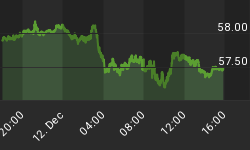For slightly more than a year, we have been following what we believe is a developing bearish triangle in copper prices. Our first article about the topic, explaining our reasoning and showing how bearish triangles work, can be found here. We received some pushback at the time from commenters who pointed to forecasts for economic growth. A year later, we see that both things have come to pass - there has been reasonable growth in the U.S. industrial sector stock index, and the price of copper has declined in spite of it.
Shortly after we began writing about it, copper broke to the down-side, making a rapid decline during the first part of 2013 from near the resistance we identified at 3.85. After making a low in June, price then began tracing a corrective pattern.
The corrective pattern now appears complete or nearly so. The overall structure we expect for 2013-2014 is a large downward C-wave following what we think was the triangle B-wave. The move in early 2013 represented the first part of the C-wave, and the corrective action of later 2013 represented the second part. From here expect one or (more likely) two additional downward legs into some of the target areas shown on the charts below.
On the monthly chart, two long-term Fibonacci-based support levels are 2.96 and 1.81. The first level has essentially been tested, and it produced the June bounce that we read as a bear-flag correction. The lower support level is a likely target region to keep in mind for swing traders operating on timeframes of several months. It may be possible to refine the target exit for a short trade based on price action on smaller timeframes and based on future developments.

Some of the refined support levels we mentioned can be seen on the weekly chart below. The major supports at 2.75 and 2.09 come from the relationship between the price move of the downward wave A and the ending price of the triangle wave B. The intermediate support at 2.62 was derived from the size of the break downward out of the triangle and the size of the corrective bounce.

Thus, until there is more price information to use in a projection, the most probable area for the downward move to end is around 1.81 to 2.09.















